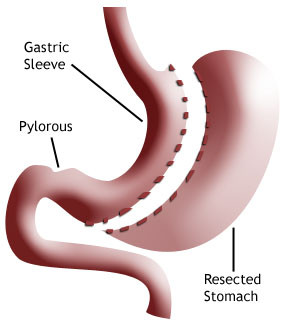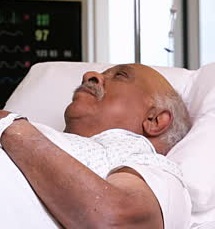People unfortunately, sometimes lose the arms or legs or parts of them in various situations in their lives. The common reasons for losing their limbs are,
- Birth defects
- Cancers
- Traumatic injuries from accidents, military combats, etc.
- Circulation problems, caused from diabetes or atherosclerosis
In any of the above cases if the limbs are lost, artificial limbs can be replaced. These artificial limbs are called prosthesis. With the help of these prosthesis, one can perform the daily activities like eating, dressing, walking and other activities. Some of the advanced artificial limbs can make the one to function very close to natural way.
The term prosthesis in ancient Greek is ‘addition application attachment’. The rehabilitation related to prosthesis is coordinated primarily by combined effort of prosthetist along with the health care professional team.
Prosthesis with Technology
It makes use of cutting edge materials like titanium, carbon fiber and Kelvar for increased durability and strength. Sophisticated prostheses are designed and developed in advanced electronics, giving increased control and stability.
Cable operated limbs are dominated by sophisticated electronically controlled artificial limbs. These advanced limbs are called myoelectric limbs and have much better control with cover of movements of muscles with the help of electrical signals. New advancements give body powered arms that are one third to half of the arms made by myoelectric limbs.
Today’s prosthetics companies, which develop high-tech artificial limbs considers certain elements of foot and socket mechanics. These advanced artificial limbs are invaluable for harder activities like sports for athlete, etc.
The elements focused are,
- Fit
- Energy storage & return
- Energy absorption
- Rotation
- Suspension
- Ground compliance
- Weight
While selecting the artificial limbs, the important factors to be considered are,
- Availability of size
- Ease of use
- Cost
- cosmetics
There are majorly four kind of artificial limbs available.
- Transradial Prosthesis
It is an artificial limb that is used to replace the arm that has been missing right below the elbow. These are again two types, cable operated limbs and myoelectric arms.
- Transhumeral Prosthesis
This artificial limb is used to replace the limb that is missing from above the elbow.
- Transtibial Prosthesis
The artificial limb of this kind can replace the leg that has been missing from below the knee. These amputees would be able to regain the movements readily and normally. It is also because that larger part of the leg is remaining and enables easier and natural moment of the limb.
- Transfemoral Prosthesis
The artificial limb of this kind can replace the leg that has been missing right from above the knee. It is hard to regain the natural and normal moments. It needs about 80% of more energy than a normal human with both the whole legs, to perform the walk. However, the advanced technologies and employment of effective material like carbon fibre, motors, hydraulics, computer microprocessors all combined with the innovated technologies provide improved control to the user.
Procedure
Prosthesis is considered to be a functional replacement of the missing limb. The process of prosthesis starts with taking plaster cast of the limb that affected. These limbs are custom-formed and are available with high strength and lightweight thermoplastics. The limbs are made according to the size of the plaster cast. Most of the prosthesis is usually attached to the external to the human body, which are not permanently fixed. Some of them can be attached permanently. Permanent way of attachment is called exoprostheses, which attaches direct to the bone. It is alse known as osseointegration method.
Exoprosthesis involves insertion of the titanium bolt directly into the bone and done at the end part of the stump. Once it is done, the bone gets attached direct to titanium, after several months. Abutment is then connected to the titanium bolt. It then extends beyond the stump then the uniquely designed artificial limb would be connected or attached to this abutment.
Exoprostheis method is employed for the following benefits.
- Improved control of the muscle of the prosthetic
- Better ability to attach or wear the prosthetic for longer time, but it is not possible with the socket and stump methods
- These transfemoral amputees provide the ability to drive the car.
There is also disadvantage associated with this method. The disadvantage is that the amputees that are directly attached to the bones don’t provide improved impacts over the limb, as it makes potential for the break of the bone possibly.
Cost of Artificial Limbs for Prosthesis in India
The above Package Cost is a tentative Approximate Package Estimate, which includes initial investigations & specialists screening, stay in a Private Room wherein patient’s assistant or relative can also stay with patient, doctor / surgeon fee, nursing care, medicines & consumables, Airport Pick-Up & Drop.
In order to access, exact estimate of treatment package cost, do email us at query@worldhealthexpert.com all your medical reports.
On receiving your medical reports, we will revert to you within 24 Hours with right estimate package after getting your medical reports examined by best team of doctors at best hospitals in India. We will also assist you in traveling part, which includes, airfare booking, medical visa invitation, airport pick-up and drop, hotel stay & visit for any sightseeing. With our 10 years of expertise in delivering highly caring International Patients Assistance Services, you can completely rely on us in every step of your recovery. Our all International Patient Assistance Services are absolutely FREE!!! as World Health Expert India (WHXI) is an official associate of India’s Best Hospitals & Specialists.


















 Jake, Male, 55, UK
Jake, Male, 55, UK
 Sulaiman, Male, 68, Africa
Sulaiman, Male, 68, Africa
 Azizi, Male, 44, Swahill, East Africa
Azizi, Male, 44, Swahill, East Africa
 Abam, 27, Female, Ghana
Abam, 27, Female, Ghana
 Fazah, 60, Male, Africa
Fazah, 60, Male, Africa
 George, 48 years, Male, UK
George, 48 years, Male, UK
 Jacob, 58 years, Male, US
Jacob, 58 years, Male, US
 Halisi, 40 years, Female, Kenya
Halisi, 40 years, Female, Kenya
 Saarah, 56 years, female, UK
Saarah, 56 years, female, UK
 Adhra, 35 years, female, Tanzania
Adhra, 35 years, female, Tanzania
